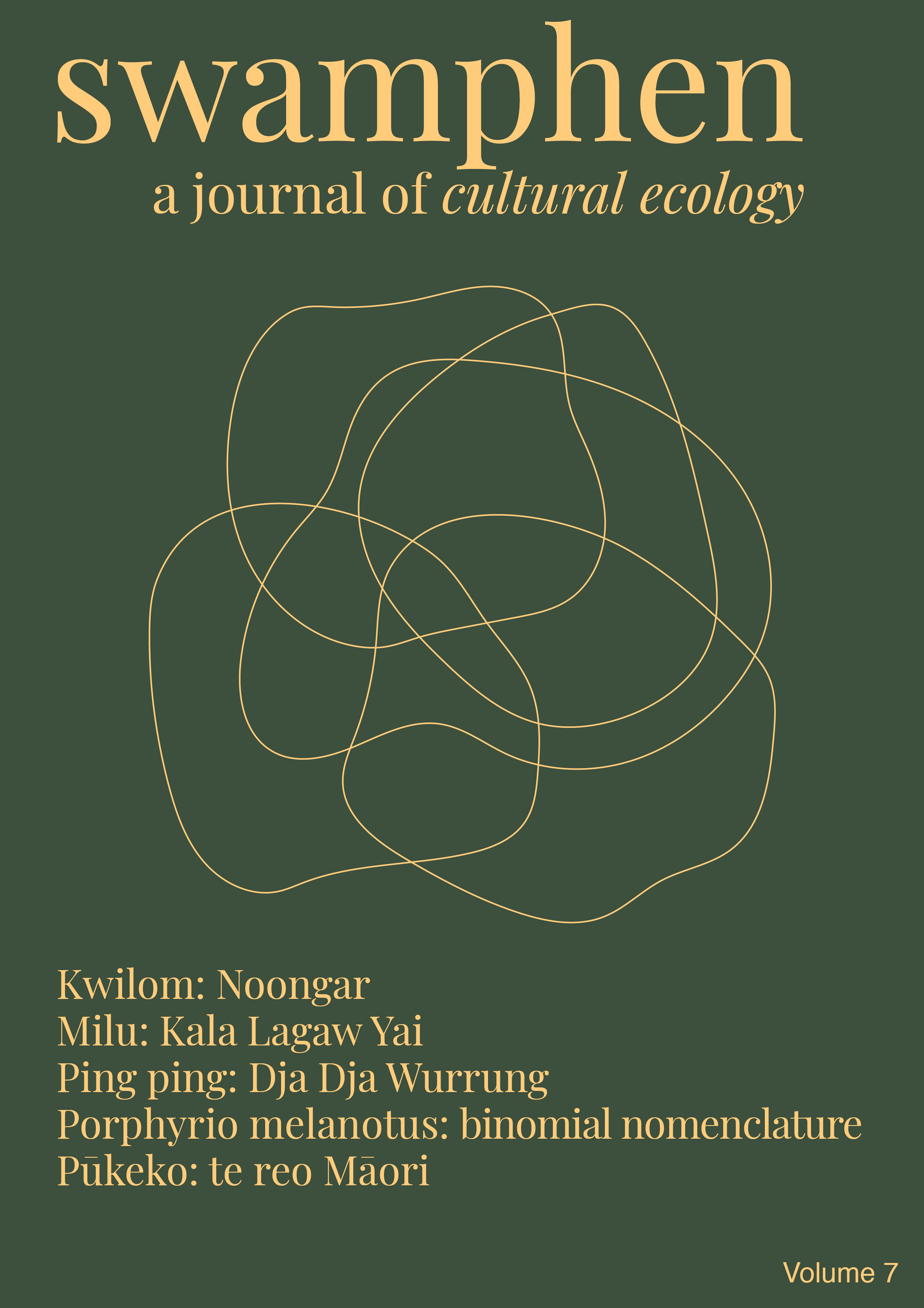Storying with Groundwater
DOI:
https://doi.org/10.60162/swamphen.7.14367Abstract
Subterranean waters enable life. Humans, non-human animals and enmeshed ecosystems of more-than-human entities, such as river and creek sides, mound springs and swamps, interact with groundwater in a myriad of complex relationships. Hundreds of Australian inland towns and communities rely on bore water. Population counts of people dependent on aquifers across Australia, on the Asian and African continents, in the Middle East and across the Americas reach into the billions. Despite this, there are few literary expressions of groundwater’s potency and vulnerability in the Australian imaginary (Wardle). This essay draws upon fictional portrayals of groundwater from the climate fiction manuscript, Why We Cry (Wardle), to suggest the ways that climate fiction might make a small shift from the ‘derangement’ of blindness to subterranean places through the novel’s endeavours to osmotically affect readers.
Downloads
Published
Issue
Section
License
Authors who publish with this journal agree to the following terms:- Authors retain copyright and grant the journal right of first publication with the work simultaneously licensed under a Creative Commons Attribution License that allows others to share the work with an acknowledgement of the work's authorship and initial publication in this journal.
- Authors are able to enter into separate, additional contractual arrangements for the non-exclusive distribution of the journal's published version of the work (e.g., post it to an institutional repository or publish it in a book), with an acknowledgement of its initial publication in this journal.
- Authors are permitted and encouraged to post their work online (e.g., in institutional repositories or on their website) prior to and during the submission process, as it can lead to productive exchanges, as well as earlier and greater citation of published work (See The Effect of Open Access).

